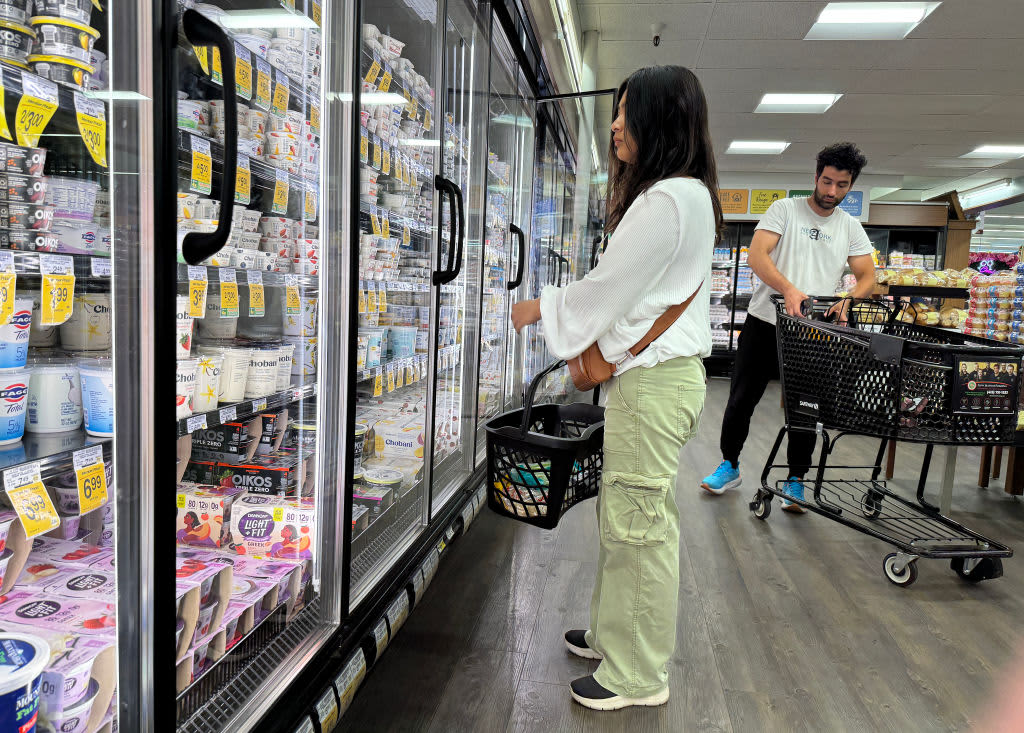June’s Producer Prices Stall — But Don’t Be Misled by the Numbers
By
Calder Monroe
Last updated:
July 17, 2025
First Published:
July 17, 2025

Getty Images
U.S. Wholesale Prices Remain Flat in June — But There’s More Beneath the Surface
The U.S. Producer Price Index (PPI) showed no change in June compared to May, a figure that on the surface suggests a cooling or stable inflation trend at the production level. However, a closer look reveals that this "zero growth" might be misleading — because it entirely excludes one major piece of the economic puzzle: imports.
According to the U.S. Bureau of Labor Statistics (BLS), the PPI reflects prices received by domestic producers for their output. That means it does not include imported goods, which are increasingly impacted by U.S. trade policy and tariffs, especially under the administration of President Donald Trump.
“By definition, imports are not included in the PPI,” the BLS confirms, “because they are not produced by U.S. firms.”
This distinction is crucial, particularly in today’s globalized economy, where a large percentage of what Americans buy — especially in sectors like apparel, automobiles, and electronics — comes from overseas.
CPI vs. PPI: Why the Gap Matters
While the PPI was flat, the Consumer Price Index (CPI) — which does include imports — rose by 0.3% in June, driven by noticeable increases in key categories. For instance:
- Apparel prices rose 0.4%
- Shelter costs increased by 0.4%
- Medical care services jumped by 0.5%
- New vehicle prices fell 0.3%, but this decline was offset by gains in other areas
The CPI, also released by the BLS, accounts for the prices paid by consumers for goods and services, regardless of where they’re produced. This makes it a more direct reflection of the impact tariffs are having on everyday costs for American households.
Why Imports Matter More Than Ever
America imported approximately $3.2 trillion worth of goods and services in 2023, according to the U.S. Census Bureau. When tariffs are imposed on these imports — as they have been on Chinese goods and certain metals — the costs often get passed down to consumers.
For example, when Trump imposed 25% tariffs on $250 billion worth of Chinese imports, studies by institutions like the Federal Reserve Bank of New York and Columbia University found that American consumers and businesses bore nearly the full cost of those tariffs through higher prices.
These dynamics are mostly invisible in the PPI but show up vividly in the CPI — which explains the growing disconnect between producer and consumer price trends.
Tariffs Set to Rise Again — Real Impact Yet to Come
The real effects of Trump’s escalating trade strategy may still be ahead. As of now, new or expanded tariffs are scheduled to take effect on August 1. If this happens, more categories of consumer goods could see price hikes — from smartphones and laptops to toys and clothing.
Market watchers and economists are wary. Although June’s PPI data suggests muted inflation pressure at the wholesale level, these numbers might be painting an incomplete picture.
“We likely won’t see the full impact of these tariffs until late Q3 or early Q4,” said Mark Zandi, Chief Economist at Moody’s Analytics. “Import-heavy industries will be the first to feel it, and consumers won’t be far behind.”
Stocks, Fed Rumors, and Crypto Turbulence
In the background of these inflation numbers, broader market activity remained volatile.
- U.S. stock indexes posted gains, but only after a turbulent trading day filled with uncertainty around trade and monetary policy.
- President Trump publicly denied rumors that he planned to fire Federal Reserve Chair Jerome Powell, easing some investor fears.
- On Capitol Hill, crypto legislation faced new hurdles, with key bills stalling in committee despite mounting industry pressure.
- Meanwhile, in the digital asset space, Ethereum (ETH) started outperforming Bitcoin (BTC) — a signal of shifting momentum within the crypto ecosystem.
Final Thoughts: Don't Let Flat Data Fool You
The June PPI might give the impression of stability, but it’s important to recognize what the index leaves out. In a global economy deeply interwoven with trade, excluding imports from inflation metrics can mislead policymakers, investors, and the public.
As we approach the August tariff deadline, consumers should brace for potential price increases, and analysts will be watching closely to see how the next round of data reflects the real cost of protectionist policies.
Bottom Line:
Flat producer prices don’t mean flat inflation. With imports left out of the equation and new tariffs looming, the real story is still unfolding — and it could hit consumer wallets sooner than many expect.
Popular articles
Subscribe to unlock premium content
Kylie Jenner’s $420M Beauty Empire Unravels: Inside the Stunning Fall of a Social Media Mogul

Britain’s Economic Decline: From Global Powerhouse to Financial Strain

Trapped by Perfection: How AI Beauty Filters Are Rewiring Our Faces—and Our Minds

Kylie Jenner’s $420M Beauty Empire Unravels: Inside the Stunning Fall of a Social Media Mogul

Britain’s Economic Decline: From Global Powerhouse to Financial Strain

Kylie Jenner’s $420M Beauty Empire Unravels: Inside the Stunning Fall of a Social Media Mogul









